Your Cart is Empty
FREE U.S. DOMESTIC SHIPPING
FREE U.S. DOMESTIC SHIPPING
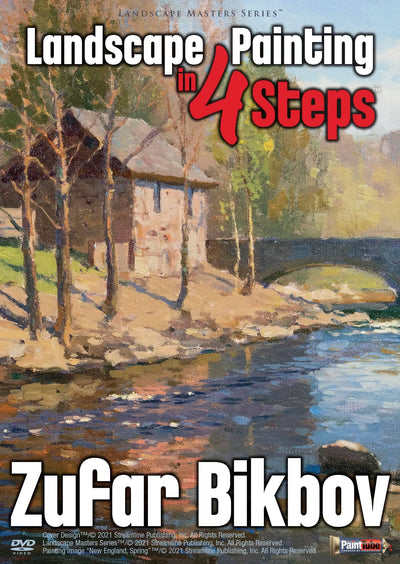
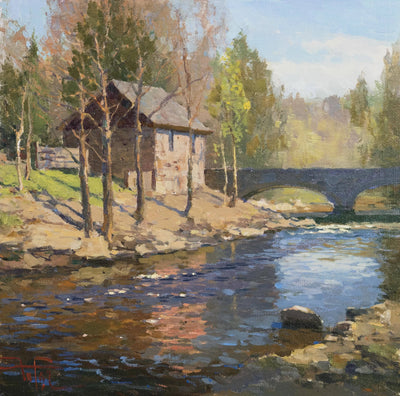
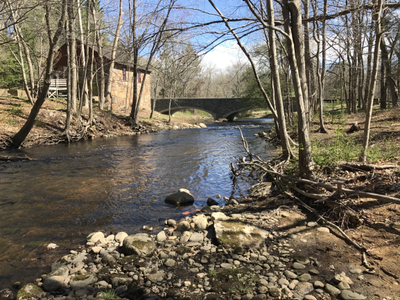
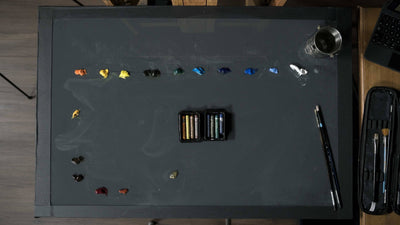
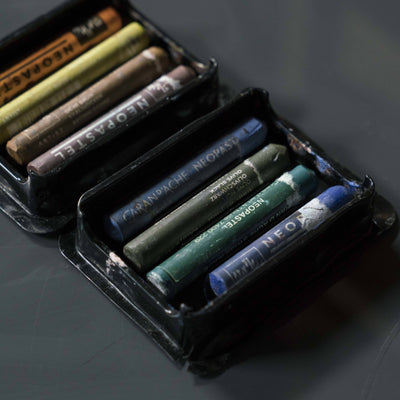
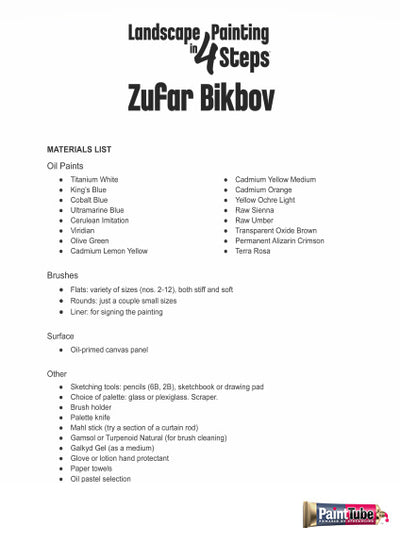
Here’s an exciting peek into Zufar Bikbov’sLandscape Painting in Four Steps:
Whether walking in your neighborhood or traveling to new lands…
The vivid color spectrum of the world radiates with beauty, just waiting for you to see it from an artist's point of view.
As landscapes open up their dynamic splendor, you experience the strong connection between human and nature.
Your first instinct is to translate what you see onto canvas … to document through the grand experience of art.
You want to capture the story of this landscape…
How can you best do that?
Painting is like a medical practice...
First understand WHAT is going on, and then understand WHY it is happening.
Structure and process are important when it comes to painting.
With a set of specific goals during the plein air process, you can capture more scenes to paint inside your studio.
Being able to effortlessly move between the outdoors and your studio alleviates a tremendous amount of worry and stress about weather, travel, packing the right equipment, etc.
Training your eyes and hands to correctly capture what you find in nature will translate into realistic paintings in the studio.
When you have a systematic process, you’ll know just what to do … and each time you use the process, you get better and better at it!
The more practice, the better your paintings will become — it’s that simple.
Paint with a Russian-American Doctor and Artist
In Russia, realism and impressionism have been treasured painting styles since the mid-1800s.
The entire academic track can take over a dozen years to complete!
Artist Zufar Bikbov had five years of instruction as a foundation to his art before following his calling to help people by attending medical school.
Art has always been part of his continuous experimentation and growth, and, even through medical school, art continued to be an essential part of his life.
Blending the structure and process of a medical career with his love of painting, Zufar created this tried-and-true four-step process to create beautiful landscapes.
When Zufar moved to the United States, American influences, especially in graphic design and illustration, changed his painting palette.
Puzzling together the best of both styles, Zufar began teaching how to condense his 11 years of study into a 4-step process — a process that can take a dedicated student one week to learn and only two or three years to be on their way to mastery.
Zufar considers the opportunity to share this information a blessing, which is exactly why we wanted to produce a full-length instructional video with him — so that more people can learn his brilliant techniques!
Zufar loves watching students become confident in their skills, but he is in such demand, he can’t possibly teach everyone in person.
4 Simple, Yet Comprehensive, Steps
Capturing the majesty of landscapes can be daunting, but as you experience Zufar’s balanced approach, you will feel ready to climb any mountain and scale any canvas.
You’ll soon discover how gettingcontrol of the painting process actually frees you, giving you confidence to keep working.
You’ll learn something new and different each time you approach a painting.
You’ll be inspired to keep advancing your painting skills.
Constructing Better Compositional Decisions
Zufar will explain how to observe and evaluate scenery by sketching and drawing the landscape while you are outside.
Then he’ll show you how to construct the textures and objects into a cohesive focal point inside the studio, demonstrating how his multi-step approach helps him evaluate the work — and even decide whether to stop before transferring to the canvas.
Russian Style. Get Rid of Details.
Travel to a Russian art school in this video with Zufar as he reveals its continued influence on his award-winning work.
You’ll gain a unique insight into how removing details after you’ve put them in allows you the freedom to remain excited as you paint.
As Zufar paints the New England landscape onto canvas, he asks, “What is this painting about?” (Perhaps the answer has changed since the beginning of the video!)
One of the biggest benefits you’ll find is seeing what happens when Zufar removes details that turn out to be in the way of creating a final expression on his canvas!